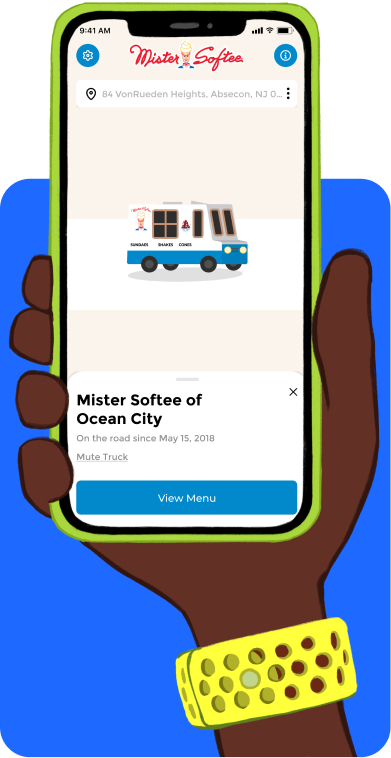Knowing how to lead successful meetings is a critical skill to have if you want your business to grow.
This is especially important for those who want to build strong leadership skills. Many entrepreneurs and founders start as one-person operations. As such, they do absolutely everything themselves.
While this is admirable, it becomes impossible to maintain as a business scales. This is when many founders find themselves needing to lead and manage others for the first time. This can be a difficult transition!
We want to help make things a little bit smoother.
Whether it’s a one-on-one meeting with your staff, a boardroom discussion about strategic growth plans, or a brainstorming session with potential partners, having well-run meetings can make all the difference in successfully achieving your goals.
If you’re an entrepreneur or small business owner looking to get the most out of every gathering – and reduce time wasted on inefficient conversations – then pay attention.
This blog post covers some key approaches that will ensure your meetings are as successful as possible.
Establish ground rules for the meeting to ensure everyone is on the same page
Having clear ground rules for a meeting can help ensure everyone is on the same page. This can help create an environment of efficiency, mutual respect, and inclusion.
A successful leader may want take questions ahead of time to direct the conversation accordingly, or even apply some sort of meeting structure. This could be as simple as emailing an agenda beforehand, ‘The Standup Meeting structure is one that has gained some popularity in recent years.
Be sure to designate times for breaks and lunch, if necessary. However, it is more recommended to keep meetings as short as possible, with only the necessary team members.
You can also provide necessary materials to all attendees in advance,. Have an agenda that includes time management goals, and actively communicate how each person’s voice is important. These simple steps will set up the tone so that every participant knows how to participate in the meeting.
Set a time limit for each agenda item to stay on track
We have all been in meetings that seem to be hours long and do not actually accomplish anything. We have all also likely had the experience of sitting in a meeting where one person dominates the entire meeting. Unfortunately, most of the attendees stay silent and unengaged.
Here is how this can be avoided!
Setting a time limit for each agenda item is an effective way to lead successful meetings. Doing so encourages participants to stay on task. It also limits how much can be discussed in one meeting.
As we all know, meetings can quickly evolve into hours-long affairs if not managed properly. That’s why structuring meetings is key. It allows everyone involved to effectively include their thoughts and fully address the issue at hand while staying within an allotted timeframe.
By setting a time limit and clarifying how much time you want to spend discussing each agenda item, you’ll dramatically improve how productive your meetings are. You can also boost how satisfied participants feel about what was achieved.
Encouraging participation for everyone involved is key to how to lead successful meetings
When it comes to how to lead successful meetings, encouraging participation from everyone involved is critical.
Everyone benefits when all voices are heard in a meeting. The various perspectives that come with those voices can inform how a decision is made or how a project progresses.
Limiting the number of participants can also help with this for several big reasons. These are:
- If too many people are attending a half-hour or hour meeting, it is simply impossible for everyone to speak, even if they want to
- Some people get nervous in front of large groups, and the more people there are the less likely they are to participate
- If meetings get too large, it’s possible that some of the people there might not even be involved in whatever projects or issues are being discussed. In this case, they genuinely may not have opinions or input.
Keep things small and to the point, and focus on making people feel comfortable brainstorming and sharing ideas.
Finding ways to make people feel safe sharing their ideas and opinions, such as using ground rules or effective questioning techniques, will go a long way in creating an environment where every voice is considered.
By engaging everyone in the meeting room, you’ll be sure to lead a productive and positive experience for all involved.
Take Notes during the meeting and send a summary afterward
Taking notes during a meeting helps project leaders take control and stay organized.
Not only does it help with the organization and tracking of tasks, but by sending out a summary afterward, everyone is held accountable for getting their work done on time.
People are reminded of what exactly they have to do. It is always good to have things in writing for clarification. Many people remember things better or even understand things more deeply if they are written down.
This can clear up any potential miscommunications before they happen!
Through thoughtful note-taking, leaders can learn how to successfully lead their meetings. They take control and direct the team towards the objective.
Making sure to thoroughly review the notes post-meeting ensures that nothing was missed. This leads to the timely completion of tasks that results in successful projects!
Have an action plan in place before the meeting starts
When it comes to how to lead successful meetings, having an action plan in place before it starts is key.
Preparation leads to improved productivity. Participants will know how their work will contribute when they join. They also know how they can collaborate with their peers.
Start by breaking down the big picture into manageable tasks and goals. Then prioritze them so you know how you want the meeting to start and how you want to focus your efforts throughout.
Knowing how much time should be devoted to each task also helps keep everyone on track during the meeting itself.
Establishing a clear agenda before the meeting takes place sets everyone up for success and can maximize results.
The last thing you want is for the attendees to show up and feel like they have no idea why there even is a meeting. You also don’t want them to leave afterward feeling like nothing was accomplished at all.
As a leader, you can foster focus in your team and inspire a truly productive environment.
Follow up after the meeting
Following up after a meeting is an important step to take in order to increase the effectiveness of a meeting.
Taking the time to document ideas and decisions, sending a follow-up email, and collecting feedback are all critical elements in how to lead successful meetings.
After a meeting, it is best to summarize held discussions and delegate tasks quickly if needed, so progress can be achieved. Always ask if anyone has any questions, so if there have been any misunderstandings or further clarification is necessary, this can be fixed quickly.
Making sure everyone involved is on the same page and that joint goals are achieved should be the ultimate aim of following up after a meeting.
Final thoughts on how to lead successful meetings for your business or startup
Meeting management can be a tricky business, but with the right guidance and preparation, any business or startup leader can lead successful meetings.
By setting up ground rules, having a set time limit, and encouraging participation within the team, allowing for notes to be taken, and sending out a summary afterward, it provides the team with an understanding of what was discussed and expectations moving forward.
Perhaps most important is having pre-defined objectives for each meeting topic along with action plans and tasks that ensure everyone is held accountable for completing tasks in a timely manner.
So next time you have a team meeting coming up, use these tips to help you better lead successful meetings right from the start!
What do you think? Comment below.
Since 2009, we have helped create 350+ next-generation apps for startups, Fortune 500s, growing businesses, and non-profits from around the globe. Think Partner, Not Agency.
Find us on social at #MakeItApp’n®
















